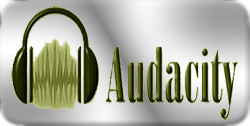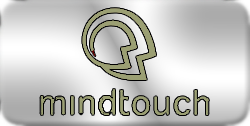YackPack - Joe Erickson
~ Sue Sipple and Jeffer SommersThe divergences and spontaneity of the spoken word—the stories we tell to explain how we connected, personally, to a student’s paper, the digressions that link what we’re saying to a past moment in the classroom, for instance—allow for a richness of response that writing, due to its more formal, structured nature, might never address.
Sipple and Sommers (2005) offer these remarks on their website, A Heterotopic Space: Digitized Audio Commentary and Student Revisions, as evidence supporting their point that audio commentary on student writing can lead to more constructive responses from students. They indicate that 89 percent of the students they surveyed in a recent study preferred audio commentary on their work as opposed to written commentary. The majority of students found that audio commentary increases the bond between them and their professors and that they “internalize audio feedback better than written feedback.”
This should come as no surprise to teachers of writing. While written comments can play a crucial role in helping students develop as writers, many of us would likely agree that the most ideal way to communicate with students about their writing is via one-on-one conferences. I always look forward to the few times in semester when I get to talk individually with students about a specific piece of their writing. I find that in some cases we can make more progress by working together in a brief office meeting than we can in several weeks of traditional classroom work. Moreover, research seems to suggest that students like these communication opportunities as well. For example, T. A. Carnicelli’s analysis (1980) of students surveyed from a writing program that required weekly conferences reveled that all of the students indicated they learned more from individual conferences than they did from class lessons (p. 107). Time for individual meetings of this order, however, is not always an abundant resource. Fortunately, recent interest in the intersection of technology and composition has revealed some innovative tools for achieving the benefit of oral communication without the tremendous time investment associated with student conferences.
As early as 1989, Jeff Sommers was writing about the positive effects of audio taped commentary on student writing. Recently, others have been working with Web 2.0 tools like podcasting for similar purposes. There is a relatively new Web 2.0 tool, however, that has not yet received much attention in this regard. YackPack is a service that allows users to send audio comments to other members of their “pack” both asynchronously and synchronously, and it could have a lot of potential for educators interested in providing audio commentary on student writing or in having students communicate with each other in a live virtual environment. Indeed, as the YouTube video below describes, the virtual campus at Lake Superior College in Duluth, Minnesota has already included YackPack as one of many communication tools in its distance education program.
One other useful feature of YackPack is that it integrates or weaves well with other Web 2.0 tools, like Wikis and Blogs. For example, PBWiki Co-Founder Remit Sethi gives a great demonstration of how easy it is to integrate a YackPack plugin into a PBWiki so that wiki participants – like students working collaboratively on a project, for example – can actually communicate with each other vocally in real time:
There are, of course, numerous studies in the field of composition outlining the benefits of oral communication about writing between teachers and students as well as among the students themselves. Personally, I find that the spoken word brings aspects to the communication process that simply do not transfer to written communication. Basic alterations in vocal tone, for example, can go a long way in terms of delivering feedback to students in ways they are more likely to react to constructively. Additionally, encouraging students to communicate orally about their writing – via peer reviews, class workshops, or just in general – is a highly regarded pedagogical strategy. As Barton, Heilker, and Rutkowski (2000) so aptly put it, learning happens when “students are talking to students” (Par. 6).
YackPack, and other digital tools, have the potential to facilitate more of these kinds of communication opportunities. YackPack is one tool that can help writing instructors carry out sound pedagogical practices in new and exciting ways, which is important because, as Chris Anson (1999) rightly states, “the key to sustaining our pedagogical practices, even as we are pulled by the magnetic forces of innovation, will be to take control of these technologies, using them in effective ways and not . . . substituting them for those contexts and methods that we hold to be essential for learning to write” (264). In other words, it’s crucial for us to remember that the tools we use must serve the pedagogy we practice – not the other way around
It’s important for us all to remember that as we consider using these tools we must keep in mind the logistics of their use in a classroom. Any tool used in the class should not inadvertently prevent or even hinder any student from participating in a class freely and activity. Also, and this, unfortunately, is especially relevant to YackPack, some tools are not as freely available and accessible as others. For example, in the weeks it has taken me to research and write this short piece, I have discovered that YackPack is no longer freely available, for its creators have decided to shift to a subscription based access model. While the subscription fee for educators is small – a couple of dollars per month – in order to use it in a class, each student would also need to pay the small subscription fee, which would not be in line with sound pedagogical practice.
Nevertheless, I think YackPack is an important tool for us to consider both for its shortcomings and its strengths. From a practical angle, it is not the best communication tool to use in a classroom because of the fees associated with its use. However, from a functionality angle, it introduces us to new communication possibilities that can help us better understand the pedagogical potentials in emerging digital communication tools. As teachers, we represent a community of people whose wants and needs can influence the shape and accessibility of new digital communication tools as they continue to emerge, so its important that we develop a robust understanding of the pedagogical possibilities of these tools as we continue to exert our influence. All pros and cons aside, tools like YackPack can help us more carefully define the qualities we desire in emerging communication technologies, in this case innovation and accessibility.
References
Anson, C. (1999). Distant voices: Teaching and writing in a culture of technology. College English 61.3 (January) pp. 261-80.
Barton, J., Heilker, P., and Rutkowski D. (2000). Fostering effective classroom discussions. Teaching Composition Retrieved from http://www.mhhe.com/socscience/english/tc/pt/discussion/discussion.htm.
Carnicelli, C.A. (1980). The writing conference: A one-to-one conversation. In P. Dononvan and B. McClelland (Eds.), Eight approaches to teaching composition pp. 101-132. Urbana, IL: NCTE.
Dahl, B. (2007). Web 2.0 inside D2L – Yack Pack. Available at http://www.mhhe.com/socscience/english/tc/pt/discussion/discussion.htm
Sethi, R. (2007). PB Wiki-YackPack Voice Chat. Available at http://www.mhhe.com/socscience/english/tc/pt/discussion/discussion.htm
Sipple, S. and Sommers J. (2005). A Heterotopic Space: Digitized Audio Commentary & Student Revisions. Retrieved from http://www.users.muohio.edu/sommerjd>.





